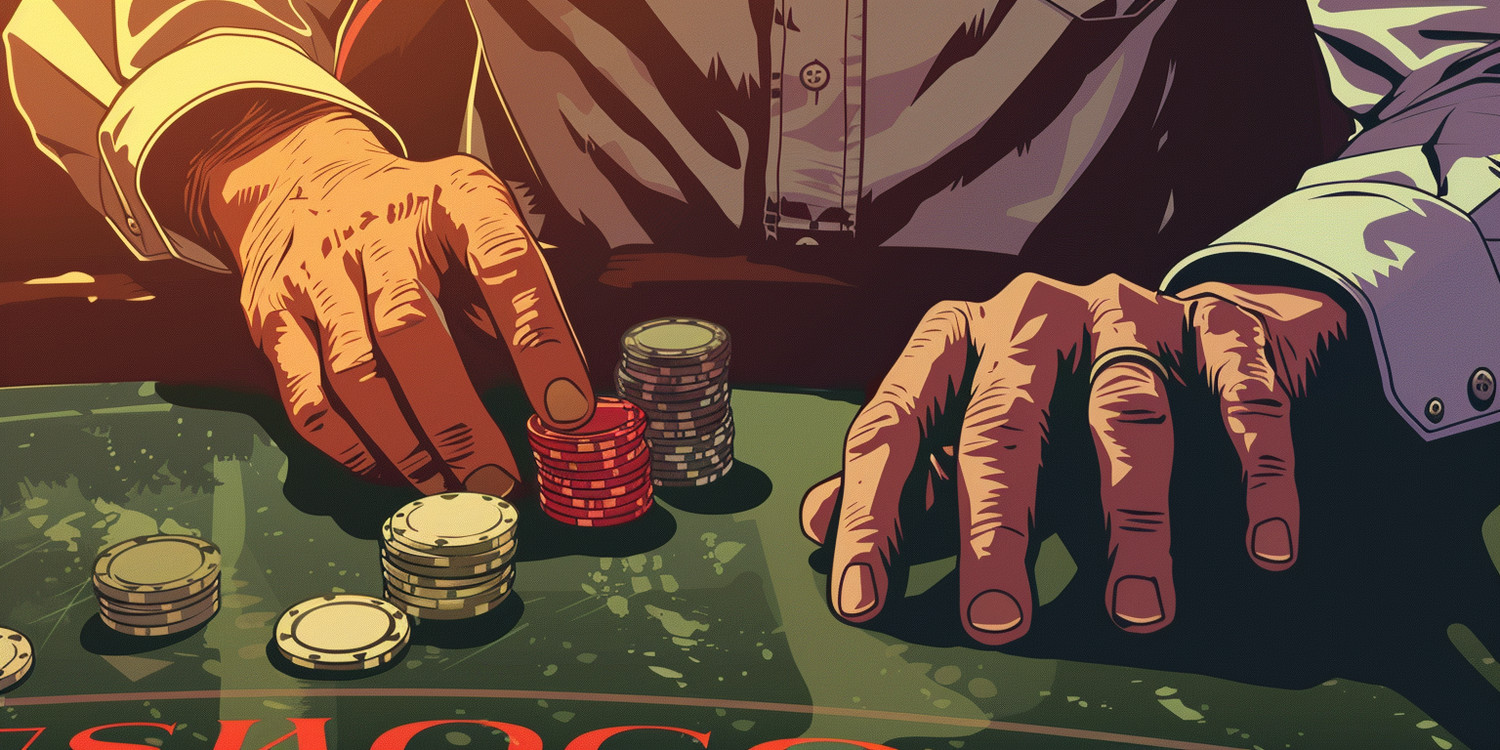
Poker transcends simple card games; it is a complex arena of psychological warfare where astute observation triumphs. Mastery requires adeptly deciphering opponents, exploiting vulnerabilities, and maintaining impeccable self-control to succeed.
Decoding Nonverbal Tells
Proficiency in poker demands acute observation of opponents’ body language, discerning subtle shifts for insights. These nonverbal cues, or “tells,” provide information regarding the strength or weakness of an individual’s hand.
Microexpressions and Facial Cues
Microexpressions, fleeting facial expressions revealing concealed emotions, are invaluable in poker. These involuntary displays, often lasting only fractions of a second, can betray a player’s true feelings about their hand strength or perceived vulnerability. Dilated pupils may indicate excitement or deception, while a slight tightening of the lips could suggest suppressed anxiety or bluffing. Successfully identifying these subtle cues requires keen observational skills and focused attention to detail. A genuine smile engages the muscles around the eyes (Duchenne marker), whereas a feigned smile typically does not. Recognizing the contrast between genuine and artificial expressions is critical for discerning deception. Furthermore, monitoring eye movements and blink rate can provide additional insights into a player’s cognitive state and confidence level, enhancing the ability to assess their hand accurately and make informed decisions.
Body Language Indicators
Beyond facial cues, a player’s overall body language offers a wealth of information. Posture, gestures, and even breathing patterns can indicate confidence, nervousness, or deception. A player exhibiting a relaxed posture with open gestures may be holding a strong hand, while a hunched posture with fidgeting hands could signify weakness or uncertainty. Rapid breathing or a visible pulse in the neck can betray anxiety related to a bluff. Hand movements, such as covering the mouth or touching the face, often suggest deception. Conversely, a confident player might display expansive gestures, such as leaning back in their chair or confidently stacking chips. Observing how a player interacts with their chips – whether they handle them nervously or confidently – can also provide clues. By carefully analyzing these body language indicators, astute players can gain a significant advantage in assessing their opponents’ hand strength and intentions.
Exploiting Player Tendencies and Styles
Adaptability is paramount; identifying and exploiting opponents’ playing styles leads to a strategic advantage. Recognizing patterns allows for tailored counter-strategies that maximize profit and minimize potential losses.
Identifying Tight-Passive vs. Loose-Aggressive Players
Categorizing opponents into distinct playing styles is crucial for effective strategy. Tight-passive players typically play few hands and tend to call rather than raise, often indicating a lack of aggression and a preference for strong hands. Conversely, loose-aggressive (LAG) players enter many pots and frequently bet or raise, applying constant pressure on their opponents. Identifying these contrasting styles allows for tailored exploitation. Against tight-passive players, aggressive betting can often win pots, as they are likely to fold without a premium hand. Against LAG players, selectively calling their bets with strong hands can induce over-bluffing and create profitable opportunities. Paying close attention to pre-flop tendencies, betting patterns, and showdown hands will reveal these styles.
Adapting Strategy Based on Opponent Profiles
Once opponents’ playing styles are identified, adjusting strategy accordingly is paramount. Against tight players, wider bluffing ranges become viable, as they are less likely to call without a strong holding. Value betting aggressively when holding a strong hand is also effective, as they are more inclined to call with marginal hands. Conversely, against loose-aggressive players, tightening one’s range and playing more defensively is advisable. Allowing them to bluff into strong hands can generate significant profits. Identifying specific tendencies, such as a propensity to continuation bet or a weakness to re-raises, further refines strategic adjustments. Continuously observing and updating opponent profiles throughout the game ensures optimal exploitation of their individual weaknesses and maximizes overall profitability.
Emotional Control and Tilt Management

Maintaining emotional equilibrium is crucial; preventing “tilt” ensures rational decision-making and optimal play. Recognizing tilt in oneself and exploiting it in opponents are essential skills for consistent profitability.
Maintaining Composure Under Pressure
Poker inherently involves high-pressure situations, requiring unwavering composure. Developing strategies to manage stress and maintain emotional control is paramount. Techniques such as deep breathing exercises, mindfulness practices, and pre-game routines can significantly mitigate the impact of pressure. Recognizing personal triggers that lead to emotional instability is crucial for proactive intervention. Taking breaks when feeling overwhelmed can prevent irrational decisions. Focusing on the long-term game plan rather than short-term losses helps maintain perspective. Avoiding impulsive reactions and adhering to a pre-defined strategy ensures consistent and rational decision-making, even under the most intense pressure. A calm and focused demeanor projects confidence and can influence opponents’ perceptions, further enhancing one’s strategic advantage.
Recognizing and Exploiting Tilt in Opponents
Identifying “tilt” – a state of emotional distress leading to irrational play – in opponents presents lucrative opportunities. Signs of tilt include erratic betting patterns, increased aggression, impulsive decisions, and visible frustration. Players on tilt often deviate from their standard strategy, making predictable errors. Exploiting this vulnerability involves applying maximum pressure, betting aggressively, and inducing further emotional responses. Targeting their perceived weaknesses and capitalizing on their impulsive actions can yield substantial profits. Subtle goading or table talk can exacerbate their frustration, further impairing their judgment. However, it is essential to maintain ethical conduct and avoid excessive or abusive behavior. Recognizing tilt and strategically exploiting it represents a significant advantage in poker, but it must be exercised responsibly.
Bluffing and Deception Strategies
Bluffing, a cornerstone of poker, requires calculated deception to manipulate opponents and win pots strategically. Mastering bluffing techniques and leveraging table image enhances the effectiveness of deceptive plays.
Mastering the Art of Bluffing
Effective bluffing is not merely random deception; it is a calculated strategy based on game dynamics, opponent tendencies, and table image. Successful bluffs require believable storytelling through betting patterns and body language. Selecting appropriate situations, such as when holding a weak hand with blockers (cards that reduce the likelihood of an opponent holding a strong hand), is crucial. Projecting confidence through steady eye contact and controlled gestures enhances believability. Varying bluffing frequency to avoid predictability is essential. Understanding opponent profiles and targeting players who are likely to fold under pressure maximizes bluffing success. Proper bet sizing is critical; bets that are too small may lack credibility, while bets that are too large may deter opponents from calling even with marginal hands.
Leveraging Table Image and Reputation
A player’s table image and reputation significantly influence their opponents’ perceptions and decisions. Cultivating a tight image, characterized by conservative play and infrequent bluffs, can make aggressive bets more credible when holding a strong hand. Conversely, establishing a loose-aggressive reputation can make bluffs more effective, as opponents may perceive a higher likelihood of deception. Strategically adjusting one’s image throughout the game can create confusion and exploit preconceived notions. For example, a player known for tight play can execute a well-timed bluff, capitalizing on their perceived reliability. Conversely, a player known for aggression can induce calls with strong hands by appearing to bluff. Managing table image and reputation is a subtle but powerful aspect of psychological warfare in poker, enhancing the effectiveness of both bluffs and value bets.
Advanced Psychological Techniques

Advanced techniques involve inducing tilt, exploiting emotional vulnerabilities, and employing verbal cues strategically. Ethical considerations are paramount when utilizing these sophisticated methods of psychological manipulation.
Inducing Tilt and Exploiting Emotional Vulnerabilities
Recognizing and exploiting emotional vulnerabilities is a key element of advanced poker strategy. Identifying players prone to tilt – a state of emotional frustration leading to irrational decisions – allows for targeted manipulation. Subtle goading, calculated aggression, and exploiting known insecurities can exacerbate their emotional distress. Applying pressure when they are already showing signs of frustration can induce impulsive plays and costly errors. However, it is crucial to maintain ethical boundaries and avoid crossing the line into abusive behavior. Successfully identifying and exploiting emotional vulnerabilities requires keen observation skills and a calculated approach, maximizing profit while maintaining a respectful and professional demeanor at the table. Understanding individual triggers is critical.
Strategic Use of Verbal Cues and Table Talk
Verbal cues and table talk can be strategically employed to influence opponents’ decisions and gain valuable information. Carefully crafted questions, subtle comments, and even feigned hesitation can elicit revealing responses. Projecting confidence or vulnerability through tone of voice and body language can influence their perceptions of your hand strength. However, it is crucial to be mindful of reverse tells – unintentional verbal cues that betray your true intentions. Observing opponents’ verbal responses to pressure or specific questions can provide insights into their hand strength or emotional state. The goal is to create an atmosphere of uncertainty and manipulate their perceptions to your advantage, while carefully concealing your own intentions. Ethical considerations are paramount; avoid personal attacks or abusive language, maintaining a professional demeanor at all times.

